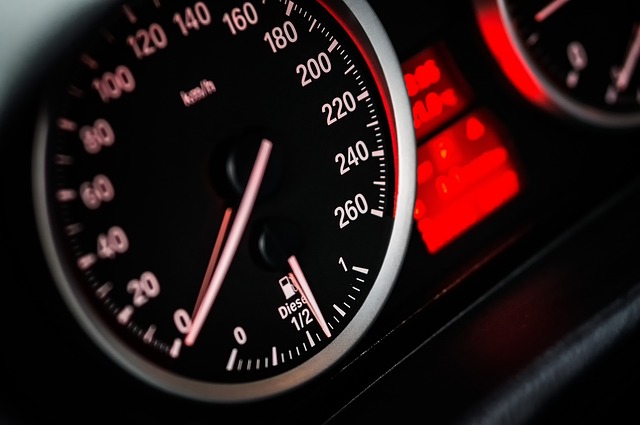Registering a car in California involves a straightforward process, but understanding the VIN (Vehicle Identification Number) verification is crucial. This guide breaks down everything you need to know for a seamless registration experience. We’ll walk you through gathering essential documents, choosing between online or in-person methods, and provide a step-by-step process. Additionally, learn about post-registration tasks to ensure your vehicle complies with California’s requirements, including proper VIN verification.
- Understanding the Vehicle Identification Number (VIN) Verification Process in California
- Gathering Necessary Documents for Car Registration
- Choosing a Suitable Registration Method: Online or In-Person
- Step-by-Step Guide to Registering Your Vehicle in California
- Post-Registration Tasks: Important Follow-ups and Considerations
Understanding the Vehicle Identification Number (VIN) Verification Process in California

In California, understanding the Vehicle Identification Number (VIN) verification process is crucial for a successful car registration. VIN, a unique 17-character code, serves as the identifier for every vehicle. During the registration, the DMV cross-references this number to ensure the car’s history aligns with its current condition and ownership records. This meticulous process not only safeguards against fraud but also helps in determining the vehicle’s eligibility for registration.
A mobile vin verifier or a vin inspection service can play a vital role in simplifying this verification step. These services, often accessible through smartphone apps, allow owners to quickly and conveniently verify their VIN online. By inputting the VIN, car owners can gain instant access to detailed information about their vehicle’s history, including accident reports, odometer readings, and previous ownership records. This digital approach streamlines the registration process, especially for folks with busy schedules, making it easier to navigate California’s stringent vehicle registration requirements.
Gathering Necessary Documents for Car Registration

Before you begin the registration process, there are several crucial documents you’ll need on hand. One of the most important is the Vehicle Identification Number (VIN) verification report. This can be obtained through a mobile vin verifier or by conducting a vin inspection yourself. The VIN is a unique code that identifies your vehicle’s make, model, and year, making it essential for official record-keeping.
Additionally, you’ll require a valid driver’s license, proof of insurance, and the title to the vehicle. It’s important to ensure all documents are up-to-date and accurate to streamline the registration process at a California Department of Motor Vehicles (DMV) office. Having these in order will make your visit more efficient, so consider conducting a mobile vin inspection beforehand to save time during the registration procedure.
Choosing a Suitable Registration Method: Online or In-Person

Choosing between an online or in-person registration method for your car in California depends on various factors. One significant consideration is convenience and time savings. If you prefer the comfort of registering from home, going through the online process could be ideal. This method involves providing necessary documents and details via the California Department of Motor Vehicles (DMV) website, including completing a vehicle registration application and submitting your Vehicle Identification Number (VIN) for vin verification.
On the other hand, visiting a DMV field office offers a more direct approach. This is especially suitable if you have complex matters to address or require immediate assistance. During an in-person visit, you’ll go through a vin inspection process where an agent checks your vehicle’s information against their systems and ensures all details are accurate. Both methods ensure your car becomes legally registered, but each has its advantages based on personal preference and circumstances.
Step-by-Step Guide to Registering Your Vehicle in California

Registering a car in California involves several straightforward steps. First, ensure that your vehicle meets all legal requirements and is ready for registration. Next, gather essential documents including the vehicle’s Certificate of Title, proof of insurance, and a valid driver’s license.
Then, proceed with vin verification by conducting a mobile vin inspection or using an online service to check the vehicle’s history. Once verified, visit a California Department of Motor Vehicles (DMV) office or use their online platform to submit your application. Pay the registration fee, which varies based on the type and age of your vehicle. After approval, you’ll receive your new registration documents, license plates, and a decal to display on your vehicle’s window.
Post-Registration Tasks: Important Follow-ups and Considerations

After successfully registering your vehicle in California, there are several important post-registration tasks to complete to ensure a smooth ownership experience. One crucial step is to conduct a Vehicle Identification Number (VIN) verification, which confirms the authenticity and history of your car. This process can be done through various methods, including a mobile VIN inspection or verification service, making it convenient for California residents to access this essential check.
Additionally, ensuring proper insurance coverage, updating your vehicle’s registration and title documents if needed, and familiarizing yourself with local traffic laws are vital follow-ups. Regular maintenance checks and keeping accurate records of all transactions will also contribute to a seamless car ownership journey in the Golden State.
Registering a car in California involves several steps, from understanding VIN verification to choosing between online or in-person registration. By gathering the required documents and following a straightforward process, you can ensure your vehicle is legally registered and ready to hit the road. Remember, accurate VIN verification is key, so double-check all details before submitting your application. Once registered, stay up-to-date with post-registration tasks for a smooth ownership experience.
